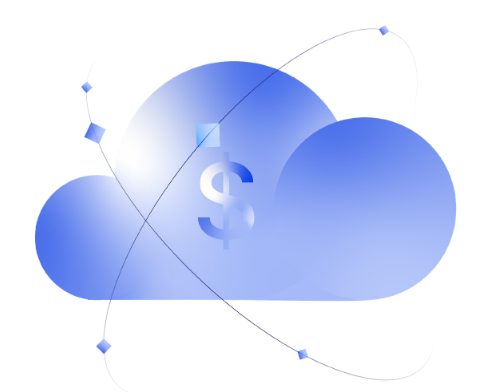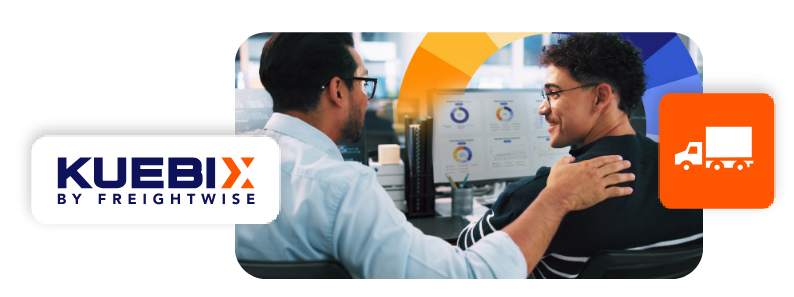The 12 Must-Ask Questions You Need Answered First
With market challenges like tariffs, parcel accessorials, and the constant need to protect product margin,managing your transportation is critical for long-term success.
What we often hear:
- I don’t have visibility into my spend.
- I am using brokers, and it feels like I don’t have control over my charges.
- I am going to multiple carriers sites to find the best rate.
- I don’t know where to begin with contracting rates, or know what is a “good” rate.
If you plan to keep up in the ever-evolving supply chain industry, you need to make a plan to gain full control and visibility over your logistics-related data and processes. Together, control and visibility can give users the power to define, manage and strengthen their supply chains, allowing them to cash in on revenue opportunities and be flexible enough to meet constantly changing business and economic needs.
Oftentimes, a solution to the lack of visibility, control, and optimization can be a Transportation Management System. With the right transportation management system (TMS), you can get that level of power along with the ability to automate and streamline work hours, time- and resource-consuming tasks such as finding the best rates and monitoring shipping statuses, you can even join connected ecosystems that allow you to tap into extensive networks of available capacity.
And with reporting and predictive analytics at your fingertips, you can take action to dramatically reduce your freight costs and make better decisions faster.
TMSes have sometimes gotten a bad rap as being expensive, cumbersome to use, or hard to maintain. In today’s reality, there are a lot of easy-to-use, scalable, and not capital intensive options for TMS. The right TMS must easily integrate with your internal systems and carriers, offer valuable insights into tangible ways to reduce your freight spend, improve your customer service, and reduce your cost of goods.
But the key to success is finding the right one for your goals. So, before selecting a TMS, use the 12 questions in this buyer’s guide to find the best solution for your company.
Table of contents
Before exploring the many TMS options that are available, you should determine exactly why you need one. For example, think about your current pain points, challenges and what you’re hoping to achieve with a TMS. Is your company a small- to medium-sized business looking to move away from manually finding carrier rates, booking and tracking shipments and into the digital age? Or does your enterprise-sized company have a more complex supply chain that could be streamlined and made more flexible with premier applications like visibility
tools and tracking and integrations? Do you ship enough that the integration of your ERP systems to your TMS will save you time, reduce errors and drive ROI? Could you be saving money by accurately auditing freight invoices with the touch of a button?
Do you need to address specific tasks such as order consolidation and optimization, dock scheduling, or real-time insights and aggregated supply chain data delivered via GPS?
Once you’ve determined your current situation, you’ll be able to make the most informed decision possible.
At their core, TMSes enable you to automatically rate, book, and track shipments, as well as communicate with shippers and customers in real-time with accurate data. A TMS that offers full analytics can also tell you what you’re doing well and where you could optimize your efforts by giving you full visibility into your supply chain.
On top of these benefits, a TMS should be able to solve other challenges by:
- Connecting you to an extensive carrier pool with more options to help you find the right carrier at the right price and service type.
- Of note, connectivity with carriers should be flexible in terms of ways to connect. If you already have carriers you want to continue to use, understanding how they connect with TMSes is important.
- Consolidating and optimizing shipments for cost-effectiveness.
- Ensuring accuracy and time savings with efficient system-to-system communication.
- Informing you and your customers of shipping statuses.
- Automatically documenting and auditing invoices, handling claims and exceptions.
- Instituting prepaid and added function to customer billing to avoid losing money.
- Incorporating all shipping modes on one platform.
- Creating easy-to-read reports and dashboards that keep track of the cost and service types of every shipment.
- Integrating with your company’s e-commerce website or quoting plat- form to give customers a seamless ordering experience.
- Managing the RFP process with carriers to efficiently set up the best rates and service levels to tender shipments more effectively.
If you’re running a small supply chain, getting a demo or a free trial period might be helpful before you commit to a platform. Since it’s unlikely that a small supply chain needs to start out with full integration capabilities and more complex applications, demonstrations and free versions must require little time to set up.
Demonstrations provide a first-hand tutorial from the experts, which will give you full insight into how the system works. If the TMS offers a free version of the system, that could be of a far greater benefit because free versions allow you to use the system in real-time and see real results incorporated into your everyday operations.
For those with enterprise-level supply chains, integrations are almost always necessary, meaning extensive time and resources are required to set up a customized TMS. As a result, a free version and demonstration that is fully tailored to your needs is often hard to facilitate. However, some TMS platforms offer one- day demonstrations that are customized to the way you work, showing you the full life cycle of an order in a sandbox testing environment. The TMS will need some of your actual order data to set up this demo, and will then simulate integrations to give you a feel for the system.

Any TMS worth its salt will provide out-of-the-box web services integrations to your current carriers at no additional charge. If the TMS in question can’t connect to your basic carrier rates, that’s a red flag.
Great TMSes will also act as a conduit for you to find additional capacity when your normal relationships fall short. Before committing to a TMS, ensuring they have the ability to book negotiated rates with your current carriers, but also additional carriers available or the ability to support spot shipments or areas where you don’t have a contracted lane.
Built in load matching capabilities make it easy to manage all your shipping needs in one place so that you don’t need to pivot away from one system into another to find additional capacity.
This also means the data about all of your shipments, whether booked via a negotiated or spot rate, reside within a single system for accurate reporting.
Collaborative carrier partners will help you find coverage when you’re in a tough situation and also act as a great
way to be introduced to new carriers and expand your carrier bench.
Freight shipping is full of challenges. Orders get changed or cancelled. Freight is damaged. Unexpected accessorial charges can appear. Shipments can get delayed. Each industry has its own unique combination of challenges.
To protect yourself from leveraging a tool that isn’t set up for success in your industry, dive a bit deeper and check out vendors’ customer and focused industries lists. If your vertical isn’t mentioned or customers don’t include
anyone in your industry, the TMS provider may not have a solid understanding of specific challenges you face. Many providers actually cater to 3PLs and brokers and have not specialized in solving shipper problems. If all the customers are in one or two industries – and not yours – look for a TMS provider with broader experience.
A TMS needs to be backed by freight experts first and foremost. Freight experts will have expertise in your specific industry and be better placed to provide optimal service for your business. Then it should be surrounded by skillful technologists who understand the platform inside and out. Together, the freight experts and technologists should speak the language of freight shipping and understand shippers’ pain points.
When looking at a TMS, ask this question:
Is the TMS run by freight experts who hired technologists, or technologists who are just learning about
freight? Because at the end of the day, you’ll want a system that can speak your language.
The level of sophistication of the TMS you need will be the deciding factor in how long it takes to set up. If you have no integration requirements, a TMS should be able to get up and running quickly – often in a matter of minutes. From there, you’re able to upload your negotiated rates with your carriers and get started shipping immediately.
Some TMS technology has pre-built connectors with ERPs, WMSes, and more. Other TMSes (like Kuebix) utilize API connections to give you flexibility in how you connect your existing technology.
 If your supply chain is complex and you’re processing many orders per day, you will need your ERP system to talk to the TMS so that orders do not need to be entered twice. You will need IT to coordinate the setup with your TMS vendor. You may also want invoice information integrated back into your ERP system to keep track of the life cycle of the financials of an order. Make sure that your
If your supply chain is complex and you’re processing many orders per day, you will need your ERP system to talk to the TMS so that orders do not need to be entered twice. You will need IT to coordinate the setup with your TMS vendor. You may also want invoice information integrated back into your ERP system to keep track of the life cycle of the financials of an order. Make sure that your
TMS vendor has experience with your ERP supplier or at least a solid framework for getting this done.
Plan on 30 to 90 days to get your system set up and running if there are several integrations and 3-6 months for more complex requirements.
The cost for every TMS in the industry is going to vary. But when considering the right TMS for your business, you should measure the total cost of ownership (TCO) of each option.
An on-premise solution will have a high TCO because it involves a hardware-based system that needs to be implemented, configured and supported. This typically requires several people to install equipment and handle maintenance and updates. Plus, the vendor often requires a multi-year contract covering the equipment before you even realize its benefits.
Thankfully, most TMS systems today are cloud based solutions. By comparison, a cloud-based solution has a much lower TCO and can be up and running in a matter of minutes or days, depending on the complexity of your supply chain.

Since everything is stored in the cloud, no staff is required to maintain the hardware and updates are installed automatically. In contrast to hardware options, cloud-based TMS platforms are priced on a month-to-month basis,
or annual basis, allowing you more flexibility. Make sure that your prices are truly all specified, as many vendors charge extra for web service or EDI connections.
Additionally, it is important to investigate if the TMS vendor’s system is modular. If it is, you only need to pay for what you need and can add more sophisticated functionality as required. Many of the larger vendors have older
architectures and force you to buy all available features like dock scheduling or invoice audit, which can be very expensive if not needed to increase efficiency. When you’ve settled on a TMS vendor, the cost to onboard carriers
and implement the TMS should be about 20% of the cost of the annual software fee. Potential customers should carefully analyze implementation time and cost before making a decision.

CARRIER INTEGRATION
Most importantly, your system must integrate with your carriers. This includes being able to rate, book, and track shipments as well as enabling quick communication.

ERP SYSTEMS
Since these systems are commonly a part of a complete supply chain, your TMS needs to
integrate with them to provide logistics professionals complete visibility into their operations.
It should be as simple as typing in an order number to see every detail.

FINANCIAL SYSTEMS
The TMS also needs to have the ability to feed audited items back into the ERP or financial system through a simple integration. This allows you to pay carriers through your own financial system.

APPOINTMENT SCHEDULING
Your TMS should make it easy to communicate appointment information and delivery schedules internally and to external parties. It should present the user with real-time, accurate updates and have functionality to automatically push these updates to other internal and external partners. This level of detail will help the user schedule appointments more efficiently within the technology and keep a single record of truth that can be referenced.

WAREHOUSE MANAGEMENT SYSTEM (WMS)
When an order is received and scanned into your warehouse management system (WMS), the TMS should be able to receive order information through a simple integration to facilitate shipment. The TMS should have a dock scheduling function that feeds appointment data into the WMS.

API INTEGRATIONS
Open APIs to add shipment tracking and the ability to rate, book, and schedule delivery right from your company’s own e-commerce website or quoting system increases customer satisfaction.

VISIBILITY PLATFORMS
The TMS should be able to connect with advanced mapping and tracking systems that harness data from ELDs, GPS and satellites to paint the best, real-time, picture of your freight.
Remember: The more integration possibilities available, the less manual operation that will be required and the more accurate your supply chain will be
With any system, having a support team to back you up is going to add a much needed level of comfort. But it’s important to look into a TMS’s offerings since every platform offers varying levels of support.
You should expect basic, free support during business hours. This typically involves communicating with the TMS company via phone or email, with your inquiry then being triaged and directed to the appropriate person.
Some TMS platforms also offer paid, higher levels of support with faster response times and additional benefits, and you may require 24/7 support. We suggest talking to several references to be sure that your potential vendor has a track record of reliable support. Check out public software review sites like Capterra to see what real
customers are saying about the TMS!
Your business will depend on a TMS for the bulk of its operations, so verifying a solid backup/recovery plan will be in your best interests regardless of the type of emergency.
An on-premise hardware system has a high chance of extended periods of downtime in the event of an emergency. It could take a full day after extreme weather for it to get back up and running, which means a full 24-hours without access to the system for you and your customers.
A cloud-based, Platform-as-a-Service (PaaS) solution offers the quickest recovery time after an emergency. This type of solution runs on a platform like Force.com or AWS, which has a full staff of technologists and engineers on call and systems built for redundancy. If your TMS goes down, they can switch you over to another node within milliseconds. All you need to worry about is internet access
The functionality and flexibility of the TMS will determine whether it’s able to scale with your business.
A TMS should be able to grow with you, whether you run a small supply chain or an enterprise-level system. As your business changes, it’s likely that your system needs will vary.
Make sure the TMS you choose offers a full menu of application and integration options. You should also be able to bring on as many internal users as necessary. Also, a priority is the ability to integrate all of your suppliers through portals. Make sure the functionality can be purchased in a modular fashion so that you only pay for what
you need
It is important to have a single system that can handle all modes of transportation you leverage, including: less-than-truckload (LTL), truckload (TL), and parcel.
You do not want to go to several different systems to manage your freight. You will be back to using carrier websites again and losing productivity. There may also be opportunities to consolidate from one mode of transportation to another to create savings and efficiencies. This would only be possible in a single system.
Be wary of carrier systems that favor their service. Additionally, many of the lower-end systems do not support parcel or heavy air modes, which might be quite important to your business.

One of the biggest misses we see is companies picking a TMS technology, because it is robust in its functionality. Then when it comes time to train multiple warehouse locations, sales teams, and more it is hard to use and clunky. If your internal teams aren’t able to use it, and go back to calling brokers for a rate, then what is the point of having solidly negotiated rates and implemented a TMS system?
Getting buy in from your organization and making sure it is an easy-to-use tool is critical to ensure you have adoption.